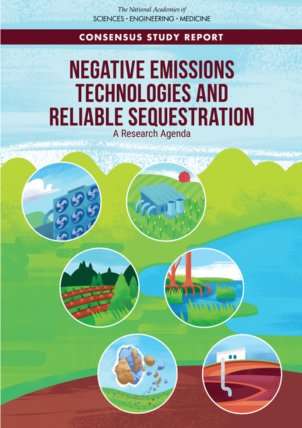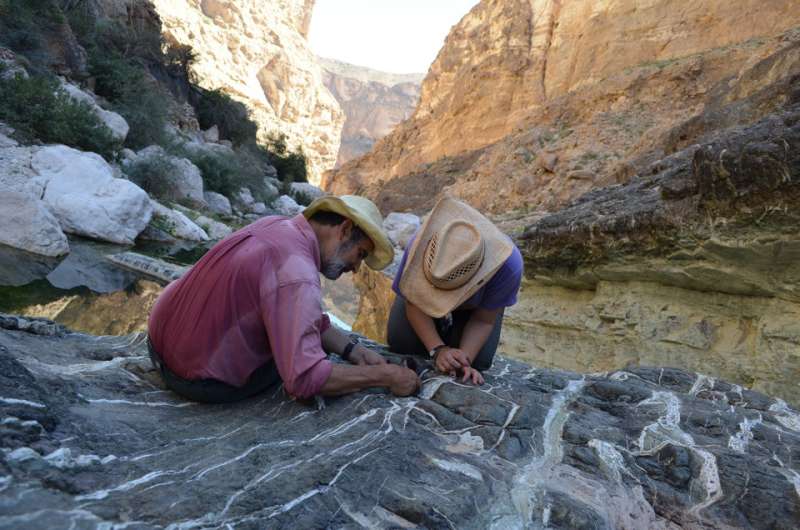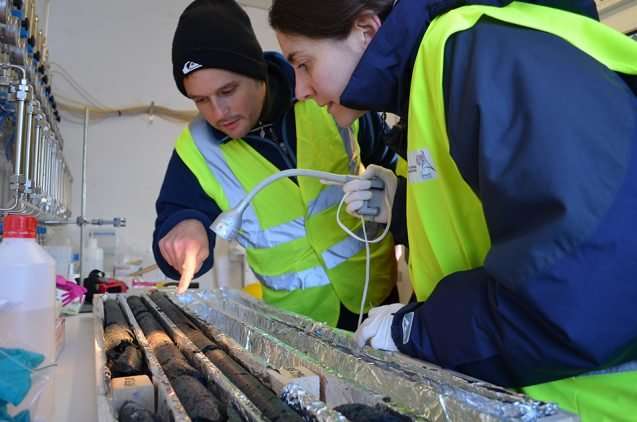New report examines key steps in removing carbon dioxide from air

Peter Kelemen is a geologist and the Arthur D. Storke Memorial Professor at Lamont-Doherty Earth Observatory. A member of the National Academy of Sciences (NAS) and an expert in carbonation of rock from Earth's mantle, Kelemen wrote a chapter on carbon mineralization for a new NAS report, Negative Emissions Technologies and Reliable Sequestration: A Research Agenda. The report was commissioned by the United States government to guide its allocation of funding and requests for additional resources from Congress.
The report examines strategies for pulling carbon dioxide from the atmosphere, explains their limitations and potential, and recommends the research needed to overcome their constraints and make them feasible at large scale. Understanding the pros and cons of each strategy and determining how best to advance the most cost effective and promising technologies is critical.
Another recent report from the Intergovernmental Panel on Climate Change determined that we cannot limit the global rise in temperature to 1.5˚C, with the goal of preventing major environmental changes, without removing carbon dioxide from the atmosphere. The NAS report looked at six strategies for removing CO2 from the air:
- Coastal blue carbon entails ways of helping coastal plants and sediments, and wetlands increase their carbon uptake.
- Terrestrial carbon removal and sequestration involves managing forests and agricultural land to enable soil to store more carbon.
- Bioenergy with carbon capture and sequestration (BECCS) would grow crops, which take up carbon as they grow, use them to produce electricity or heat in a power plant, then capture and sequester the CO2 the power plant produces.
- Direct air capture sucks CO2 out of the air and stores it underground.
- Carbon mineralization exploits a natural process wherein reactive rocks chemically bond with CO2 to form solid carbonate minerals such as limestone that can store CO2 for millions of years.
- Geological sequestration injects captured CO2 underground where it can be stored in the pore spaces.
Kelemen's work focuses on carbon mineralization; he is a lead proponent of the Oman Drilling Project, an initiative involving more than 150 international scientists from disciplines such as geophysics, geochemistry, geology, biology, and physics who are working on research topics related to a unique geological feature in the Oman desert. In this region, the oceanic crust and the rocks underneath the mantle have been thrust up onto the surface, creating the largest exposure of ocean crust and upper mantle anywhere on land.
Kelemen is interested in understanding the natural process of carbon mineralization that occurs in this feature. His goal is to be able to emulate the process and speed it up through a man-made system that will remove vast quantities of CO2 from the air.

"When rain falls on these mantle rocks, it dissolves magnesium from the rocks and that sucks CO2 from the air, and makes a very magnesium bicarbonate rich fluid," Kelemen said. "That goes underground and precipitates almost all the carbon in solid carbonate minerals. Along that reaction path, it also dissolves calcium and when the calcium rich water comes back to the surface, there's no carbon in it but it takes CO2 directly out of the air to form solid calcium carbonate."
If this type of carbon mineralization system can be replicated, it would have the potential to store tens of billions of tons of CO2 each year, and is one of the only options that could do so at this scale. But the technique may have negative impacts: Mining or exposing minerals could pollute water resources and trigger earthquakes and the process is still relatively expensive per ton of carbon.
Nevertheless, the work in Oman enables scientists like Kelemen to study the natural uptake of CO2 through the weathering of the rocks. The researchers are gathering pivotal data on how water flows through the rocks, their permeability and porosity, and how that affects speed of flow, which will be critical for designing an engineered system.
The NAS report recommends the U.S. launch a research initiative to develop carbon dioxide removal technologies as soon as possible. It suggests the more naturalistic and existing strategies—coastal blue carbon, forest management and forestation, and increasing soil carbon—be scaled up and their costs lowered, and new technologies such as direct air capture and carbon mineralization be explored further. Investing in this research will not only help limit climate change impacts, it would also allow the U.S. to lead the way in pioneering new technologies and controlling the associated intellectual property.
"There are lots of things that might work [to remove carbon dioxide from the air] and they all have a certain amount of uncertainty associated with them and a certain amount of promise," Kelemen said. "So you want to have lots of possibilities being investigated in parallel in order to weed out what the optimal 10 or so might turn out to be."
Kelemen said when he arrived at Columbia in 2004, he was impressed by the amount of expertise related to carbon dioxide removal and mineralization. Some of these scientists were part of an international consortium that founded the CarbFix Project in 2006, which injects CO2 into basalt beneath Iceland's Hellisheidi power plant, the world's largest geothermal facility. CarbFix now injects 12,000 tons of CO2 into the ground each year at a cost of $30 per ton.

In addition to Kelemen, a number of Columbia University scientists remain at the forefront of research into the large-scale removal of CO2 from the atmosphere.
David Goldberg, a geophysicist and Lamont Research Professor at Lamont-Doherty, is investigating the feasibility of storing 50 million tons or more of CO2 in basalt reservoirs in the Pacific Northwest. These basalt reservoirs contain pore spaces that could potentially fill up as the CO2 mineralizes into carbonate limestone in two years or less.
Alissa Park, Lenfest Junior Professor in Applied Climate Science and interim director of the Lenfest Center for Sustainable Energy, is working on ex-situ carbon mineralization. This involves transporting reactant materials to a power plant or lab, grinding them up, mixing them with CO2, and then putting them into a reactor. Because this is an expensive process, Park is looking into reducing costs through making products that could be sold. She is studying additives for concrete that could store CO2 and synthesizing the hydrocarbons from captured CO2 to make fuels, useful chemicals, or pharmaceuticals.
Julio Friedmann, a Department of Energy official under Obama and an expert in carbon management and CO2 removal, is a senior research scholar at the Columbia Center on Global Energy Policy. He's working to attract investors and improve the financing for projects that capture and utilize CO2.
Kelemen says this diverse array of technologies and approaches will be needed to maintain the global temperature increase below 1.5°C.
"If we're going to have any hope of meeting the Paris targets, additional kinds of carbon dioxide removal from air will be necessary," Kelemen said. "We should get ready for the possibility that they will happen."
Provided by Earth Institute, Columbia University
This story is republished courtesy of Earth Institute, Columbia University http://blogs.ei.columbia.edu.
















